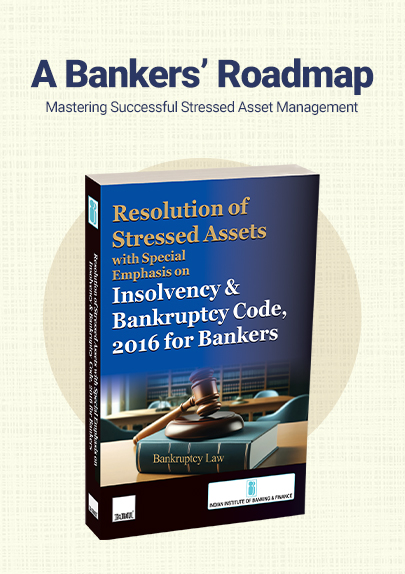[Analysis] CII Guidelines on Independent Directors’ Appointment and Board Assessment
- Blog|Advisory|Company Law|
- 6 Min Read
- By Taxmann
- |
- Last Updated on 25 April, 2024
Table of Contents
- Part A: Guidance on the process of Appointment of Independent Directors
- Part B: Process of Board Evaluation
The Confederation of Indian Industry (CII) has issued Guidelines on the Appointment of Independent Directors and the Process of Board Evaluation (‘Guidelines’). The Guidelines aim to serve as guidance on the Appointment of Independent Directors, Succession Planning and the Process of conducting Board Evaluation. The Guidelines are divided into two parts respectively with ‘Part A’ focusing on Appointment of Independent Directors & Succession Planning and ‘Part B’ on the Process of Board Evaluation. This write-up aims to analyse the guidelines as under:
1. Part A: Guidance on the process of Appointment of Independent Directors
Part A delves into the appointment of Independent Directors and succession planning, emphasizing Diversity, Equity, and Inclusion (DEI). CII has observed that the Shareholders’ activism has heightened the need for clarity on Independent Director roles across diverse company setups.
CII emphasised that Board evaluations are crucial for good governance but are often treated as box-ticking exercises, particularly regarding Independent Directors’ performance. In this regard, the CII has suggested that evaluation process of Independent Directors needs substantial enhancement for value accreditation.
1.1 Guideline 1: Roles and Responsibilities of Independent Directors
CII Guidelines 1 states that, the role and responsibilities of Independent Directors have evolved over the years and it may also include crisis management, risk oversight, and sustainability alongside traditional responsibilities in strategy and finance. It urges that Independent Directors must understand their role clearly and be equipped to fulfil it, supported by management.
Timely and detailed information from management is crucial for effective decision-making, with Independent Directors having the right to seek additional information. They should dedicate sufficient time and independently review provided information, discussing any discrepancies with management or significant shareholders in the organization’s interest.
Guidelines also call for management to provide a report on the key developments between two board meetings along with information relating to the agenda items. Independent Directors can also seek additional information to form an informed decision. The Independent Director may also independently review the information provided and discuss it with management/significant shareholders in case of any disconnect from the assessment.
1.2 Guideline 2: Independent Director Appointment and Tenure for Long-Term Business Sustainability
Companies’ needs and expectations from Independent Directors vary based on their stage of evolution and maturity. Start-ups differ from mature market leaders, necessitating tailored selection criteria rather than rigid standards like years of experience. Governance must balance short-term performance with long-term sustainability, highlighting the importance of Independent Director tenure.
Based on performance and fitment per the evolving aspects of business, there may be merit for Independent Directors to be appointed for two terms of five years each (as permissible under law). This will help Independent Directors understand the sector and company well and enable focus on long-term performance.
The CII guidelines also suggests six principles’ guidance for the selection of Independent directors as under:
- Board Alignment
- Deep Understanding of requirements
- Board and Creative Research
- Confident approach to candidates
- Perceptive Analysis of Candidates
- High Quality Score
1.3 Guideline 3: Continuous Succession Planning for Board Excellence
Succession planning for a strong and future-relevant Board entails continuous review and identification of needs, rather than being a one-time event. Concerning succession planning, the CII Guidelines provide that, companies should strategize by identifying and prioritizing the skills and experiences essential for director and committee roles.
CII guidelines recommends initiating succession planning for Independent Directors whose tenure is expected to end within the next 12 months, ensuring a seamless transition and sustained governance excellence.
1.4 Guideline 4: Diversity Inclusion in Board Composition for Enhanced Decision-Making
Diversity in board composition fosters varied viewpoints crucial for effective decision-making, especially in today’s dynamic business landscape. Continually enhancing skillsets and competencies promotes board diversity and refreshment. Boards should prioritize relevant domain knowledge while ensuring a diverse mix of backgrounds, experiences, and skills.
Such diversity enhances social initiatives, stakeholder engagement, human capital management, and Diversity, Equity, & Inclusion (DEI) initiatives, further supporting the company’s ESG journey. Women directors bring unique perspectives and have proven their value on corporate boards, highlighting the need for improving gender diversity by appointing more women directors.
1.5 Guideline 5: Comprehensive Insurance Coverage for Independent Directors
Guideline 5 highlights the importance of appropriate insurance coverage for directors, particularly Independent Directors, to safeguard them from liabilities. While Top 1000 entities are mandated to have Directors and Officers (D&O) liability insurance by SEBI LODR, the CII guidelines advocate that all listed companies should consider Directors’ and Officers’ liability insurance to protect them from liabilities.
Clarity on D&O coverage even post-resignation for acts during their tenure is recommended. Exclusions and limits for claims should be minimized, with protection for actions taken in good faith. Understanding the nuances of liability, including civil and criminal aspects, is crucial for effective coverage.
1.6 Guideline 6: Formalising Indemnity and Insurance for Independent Directors
Guidelines provides that the formalization of indemnity and insurance for Independent Directors should be ensured through written agreements, specifying their responsibility only for acts they were aware of and involved in through Board processes or consent.
Proceedings against Independent Directors should be initiated only upon prima facie evidence of their potential involvement, rather than as a routine procedure. This approach aims to protect Independent Directors from unwarranted liability while ensuring accountability for their actions within the company.
1.7 Guideline 7: Compensation for Independent Directors Recognising Increased Responsibilities and Risks
Compensation may be commensurate with the heightened roles and responsibilities of Independent Directors. The strategic inputs and risk bearing while running the risk of facing criminal liability actions may be considered while remunerating Independent Directors.
Comments:
The CII’s comprehensive guidelines on the appointment of Independent Directors and succession planning underscore the critical role of Diversity, Equity, and Inclusion (DEI) in board composition, stressing the need for clarity in Independent Director roles across diverse company setups.
By advocating for continuous succession planning and emphasizing the importance of comprehensive insurance coverage and formal indemnity for Independent Directors, the guidelines aim to enhance board effectiveness and mitigate risks.
Furthermore, the recommendation to align Independent Director compensation with increased responsibilities and risks reflects a proactive approach towards promoting governance excellence and accountability within organizations. Overall, these guidelines relating to appointment of Independent directors are poised to drive positive changes in board dynamics, governance practices, and long-term business sustainability.
2. Part B: Process of Board Evaluation’
Part B guides to enhance Board effectiveness through efficient evaluation processes. Larger companies may afford professional assistance for Independent Director appointments or Board Evaluation, while smaller ones need guidance.
2.1 Guideline 8: Comprehensive Steps for Board Performance Evaluation
The following performance evaluation steps may be followed:
| Step | Description |
| i. | Setting out the purpose, methodology, and objective of policy |
| ii. | Laying clear responsibilities for carrying out the evaluation process – Chairman, Board, Committees, Individual directors, External agency |
| iii. | Setting out timelines for the entire process cycle – by breaking into quarterly milestones |
| iv. | Setting parameters and key result areas |
| v. | Deciding tools and methodology – overview, questionnaire, interviews, self-assessment, data analytics, report, presentation of findings, and feedback from directors |
| vi. | Engaging with directors on evaluation findings |
| vii. | Working on gap areas and implementing changes |
| viii. | Ideally, the NRC should compile the feedback and comments in the evaluation forms and appropriately review the same |
| ix. | Consolidated feedback and comments along with its recommendations be placed before the Board |
| x. | Disclosure to stakeholders |
| xi. | Having a policy on Board evaluation |
2.2 Guideline 9: Setting the Review Parameters
The CII Guidelines recommend that if a Director or Independent Director’s performance evaluation by the Board is unsatisfactory, the Chairman of the Nomination and Remuneration Committee (NRC) may conduct a face-to-face discussion to provide feedback.
Additionally, it provides that the Board or NRC should periodically review, update, and approve evaluation questionnaires and parameters every three years, with disclosure of these parameters encouraged for transparency in corporate governance. This ensures ongoing improvement in the evaluation process and transparency in reporting.
2.3 Guideline 10: Disclosure of Action Taken
Board evaluation, when done with efficacy, can help organizations to identify and improve board effectiveness. The disclosure requirement in the annual report may include:
- Action taken based on the outcome of the latest evaluation process of the board where there has been specific feedback given to any director on performance criteria.
- Progress made on the past actionable items.
Comments:
Part B of the CII guidelines offers valuable insights to bolster Board effectiveness through streamlined evaluation processes. Through comprehensive steps for performance evaluation, including setting clear objectives, timelines, and engagement strategies, the guidelines provide a structured approach for organizations of all sizes.
The emphasis on periodic review and updating of evaluation parameters, coupled with the disclosure of action taken and progress made, underscores a commitment to transparency and continuous improvement in corporate governance practices.
Furthermore, the provision for face-to-face feedback sessions and the involvement of the Nomination and Remuneration Committee highlights a proactive stance towards addressing performance gaps and fostering accountability within the Board.
Disclaimer: The content/information published on the website is only for general information of the user and shall not be construed as legal advice. While the Taxmann has exercised reasonable efforts to ensure the veracity of information/content published, Taxmann shall be under no liability in any manner whatsoever for incorrect information, if any.

Taxmann Publications has a dedicated in-house Research & Editorial Team. This team consists of a team of Chartered Accountants, Company Secretaries, and Lawyers. This team works under the guidance and supervision of editor-in-chief Mr Rakesh Bhargava.
The Research and Editorial Team is responsible for developing reliable and accurate content for the readers. The team follows the six-sigma approach to achieve the benchmark of zero error in its publications and research platforms. The team ensures that the following publication guidelines are thoroughly followed while developing the content:
- The statutory material is obtained only from the authorized and reliable sources
- All the latest developments in the judicial and legislative fields are covered
- Prepare the analytical write-ups on current, controversial, and important issues to help the readers to understand the concept and its implications
- Every content published by Taxmann is complete, accurate and lucid
- All evidence-based statements are supported with proper reference to Section, Circular No., Notification No. or citations
- The golden rules of grammar, style and consistency are thoroughly followed
- Font and size that’s easy to read and remain consistent across all imprint and digital publications are applied






 CA | CS | CMA
CA | CS | CMA


